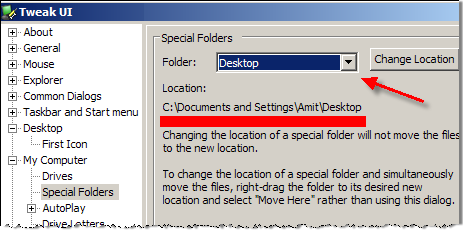 The C: drive is the default destination for all Windows XP files including Temporary Folders, Internet Files, Programs, My Documents, Pictures, etc. Even your download manager would save those huge internet videos and Office Vista installers onto your default c: partition.
The C: drive is the default destination for all Windows XP files including Temporary Folders, Internet Files, Programs, My Documents, Pictures, etc. Even your download manager would save those huge internet videos and Office Vista installers onto your default c: partition.Now when everything is piling up on c: drive including the bulky but critical Windows Paging file, it is very important that you either change the default file locations or regularly clean you hard-disk folders else be prepared for a crisis wherein new programs can't be installed and Windows crawls like a snail because there isn't enough space.
Here are 12 simple but useful tips to help you reclaim the hard-disk space and prevent it from filling up in future:
1. Get CCleaner - a free utility that will clean up all your temp folders, internet files, index.dat, cookies, recent file lists, Windows Installer programs, cache folders, etc. [more information]
2. Delete everything inside the Windows Prefetch folder (\\Windows\Prefetch) - you may save a couple of MBs and may also notice that Windows loads faster.
3. Change the location of your Windows Temp folder by chaning the values of TEMP and TMP environment variables to something like D:\Temp (Control Panel -> System -> Advance -> Env. Variables)
4. Whenever possible, install applications and programs to a drive other than the default C: drive. Most software give you an option to select the target install folder during the setup process. You could just replace c: with d: so the programs are installed in d:\Program Files folder.
5. If you use Apple iTunes to download podcasts [and movies later], change the default save folder of iTunes from My Music to some other folder like D:\iTunes - This is very important as the podcast and video files can easily occupy couple of GBs in few months time.
6. Most digital cameras or video camcorders would automatically download the pictures or videos to My Pictures or My Videos folder inside the My Documents folder which is again located somewhere on the C: drive - Change the setting to point to some D: drive folder.
7. Some Windows users have the tendency to save files to their desktop folders for easy access. This is a bad practice for two reasons - one, it would increase the shut down time of Windows since everything has to be copied to your profile folder when you are on the network and second, the desktop folder is again the C: drive.
8.While System Restore is a god-send service to help you revert to the previous state incase of installing a corrupt driver, the individual restore points do occupy space on the hard drive. Start the disk clean utility from the accessories system tools menu and delete all but the most recent system restore point.
9. Depending on your system settings, the Windows Page file may occupy hundreds of MB space on your C: root drive. There it is best to clear the page file at Windows Shut down and even better approach would be to move this file to another drive instead of C:
10. When you download service packs or patches from the Windows Update website, the installers also stay inside your Windows XP folder until you delete them manually.
11. Clear the Recycle Bin. And if nothing helps, open the Add Remove Programs window and uninstall all the software programs that you haven't used in the last month or so. Probably you won't need them in future as well.
12. Download the TweakUI Powertoy or use the XP Pro Group Policy editor (gpedit.msc) to move select system folders to a different drive. Thus you can move the bulky My Documents folder which contains the My Pictures/Music/Videos sub folders to the D: drive.
